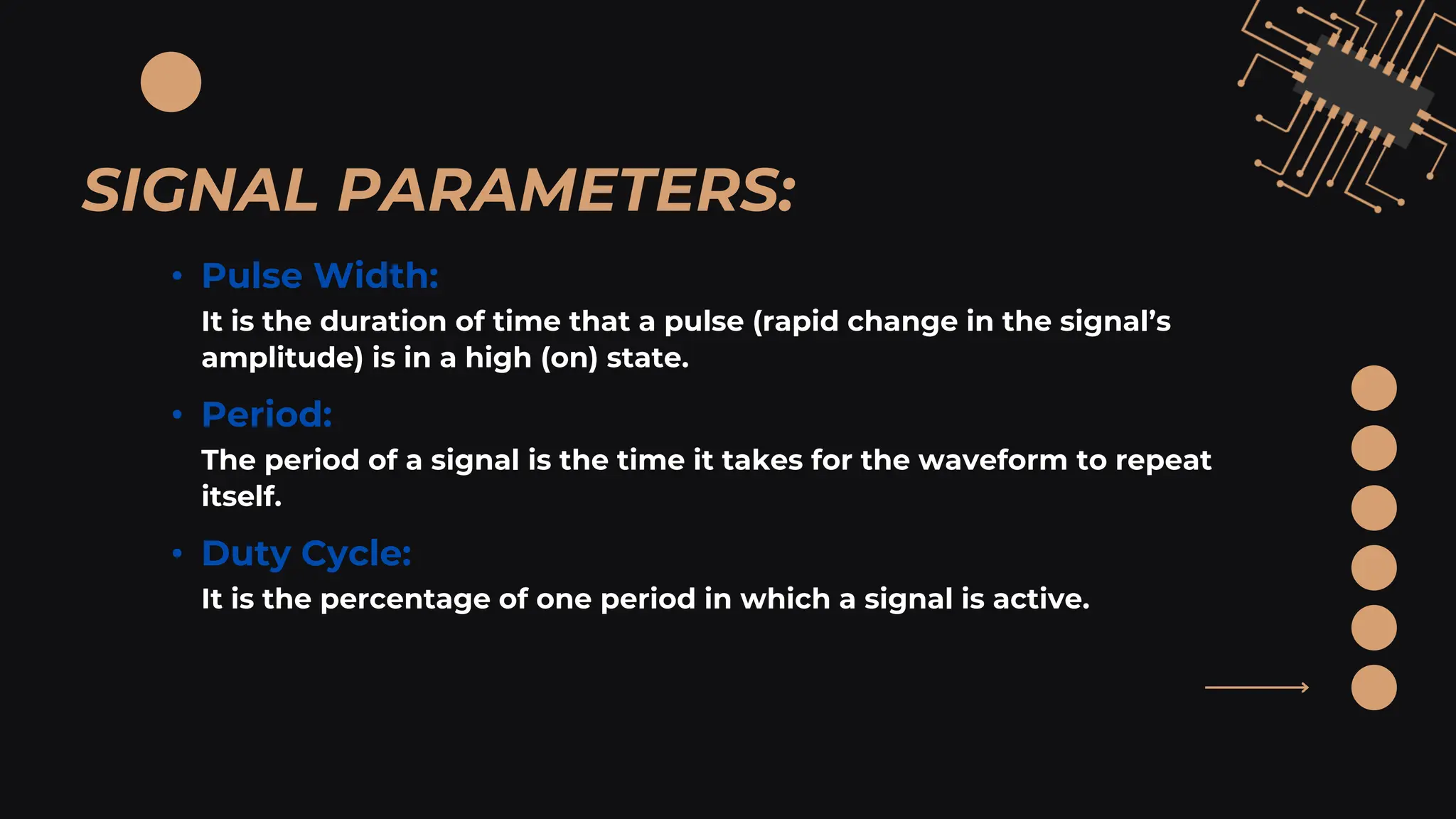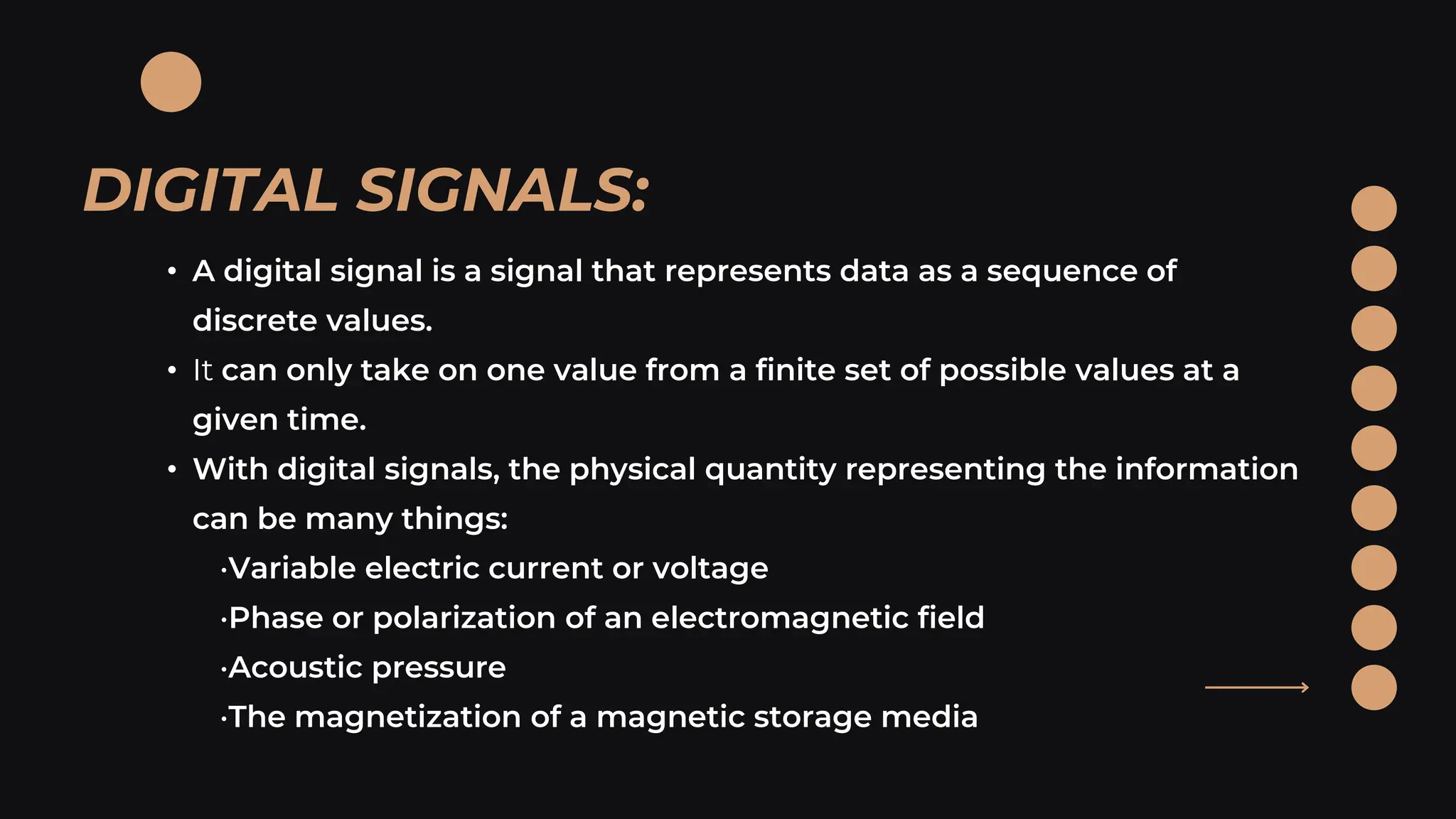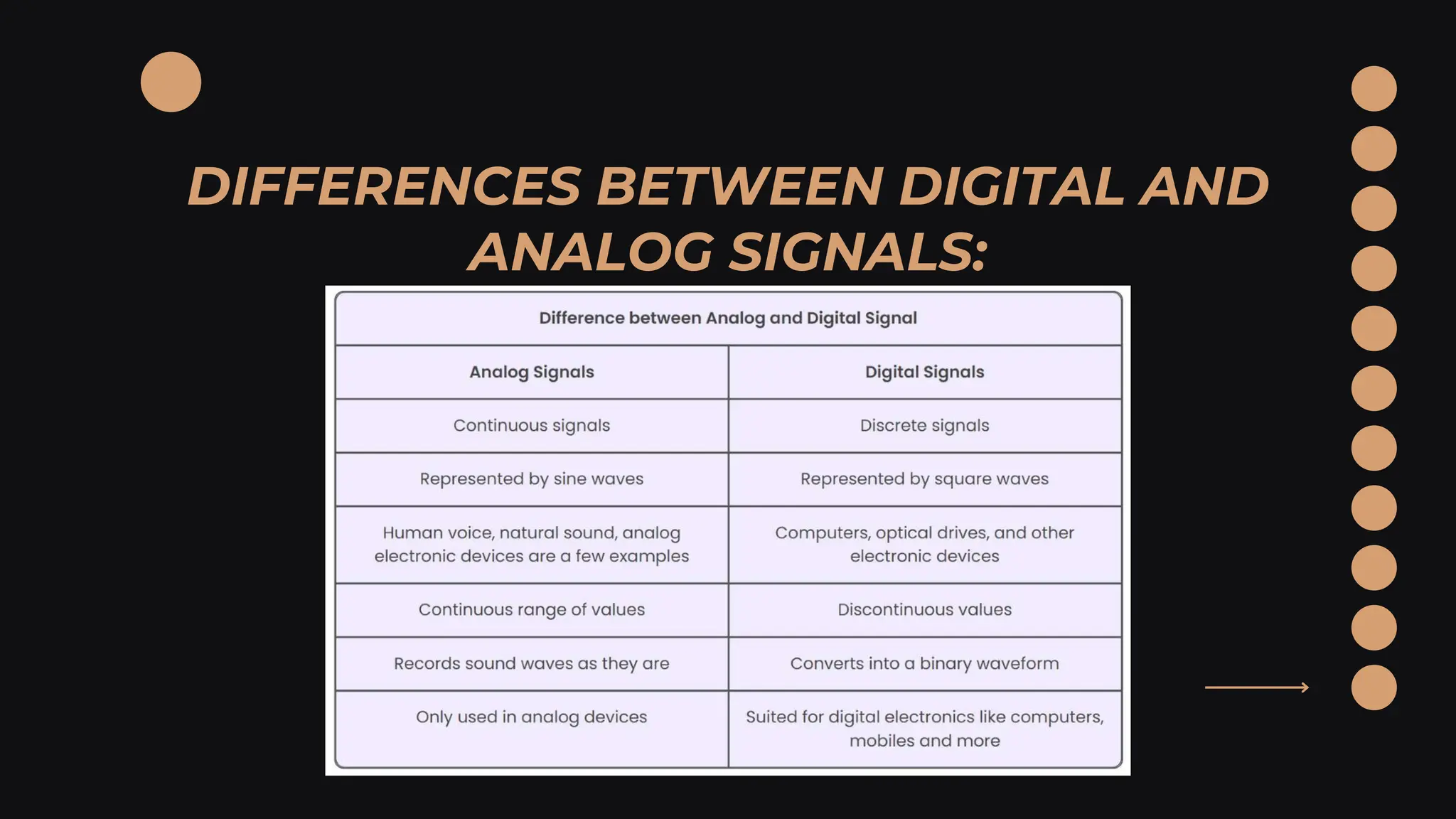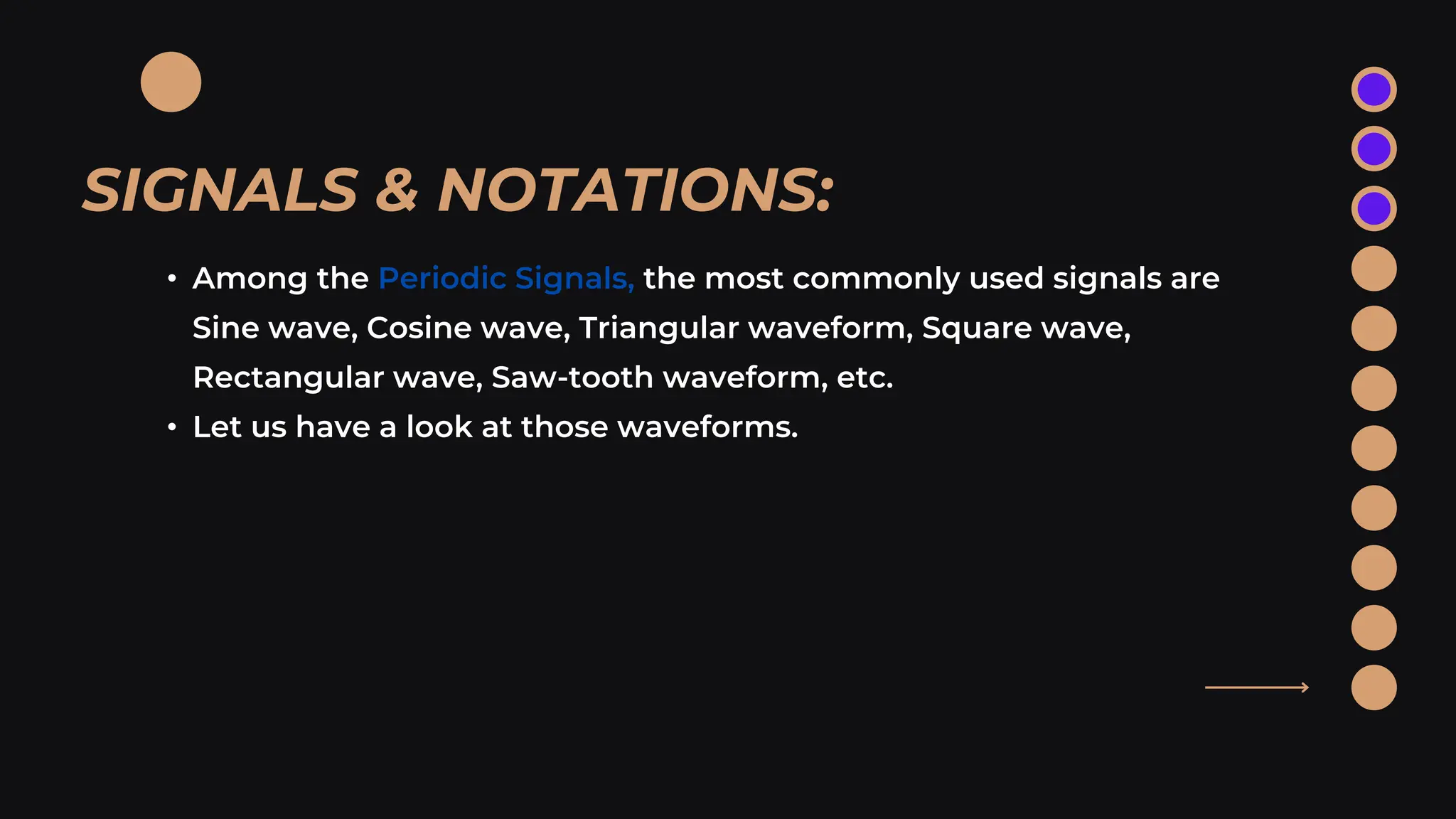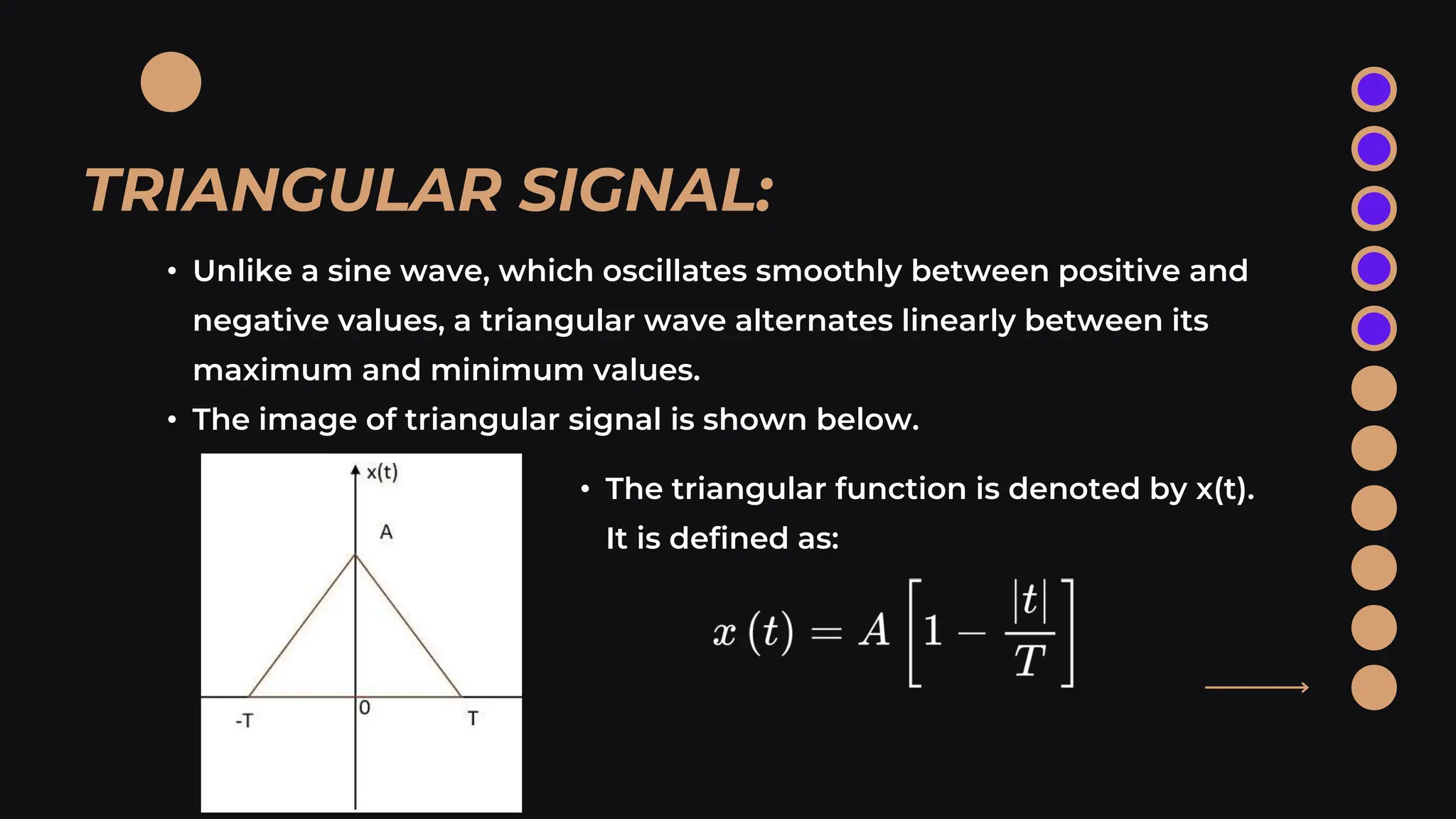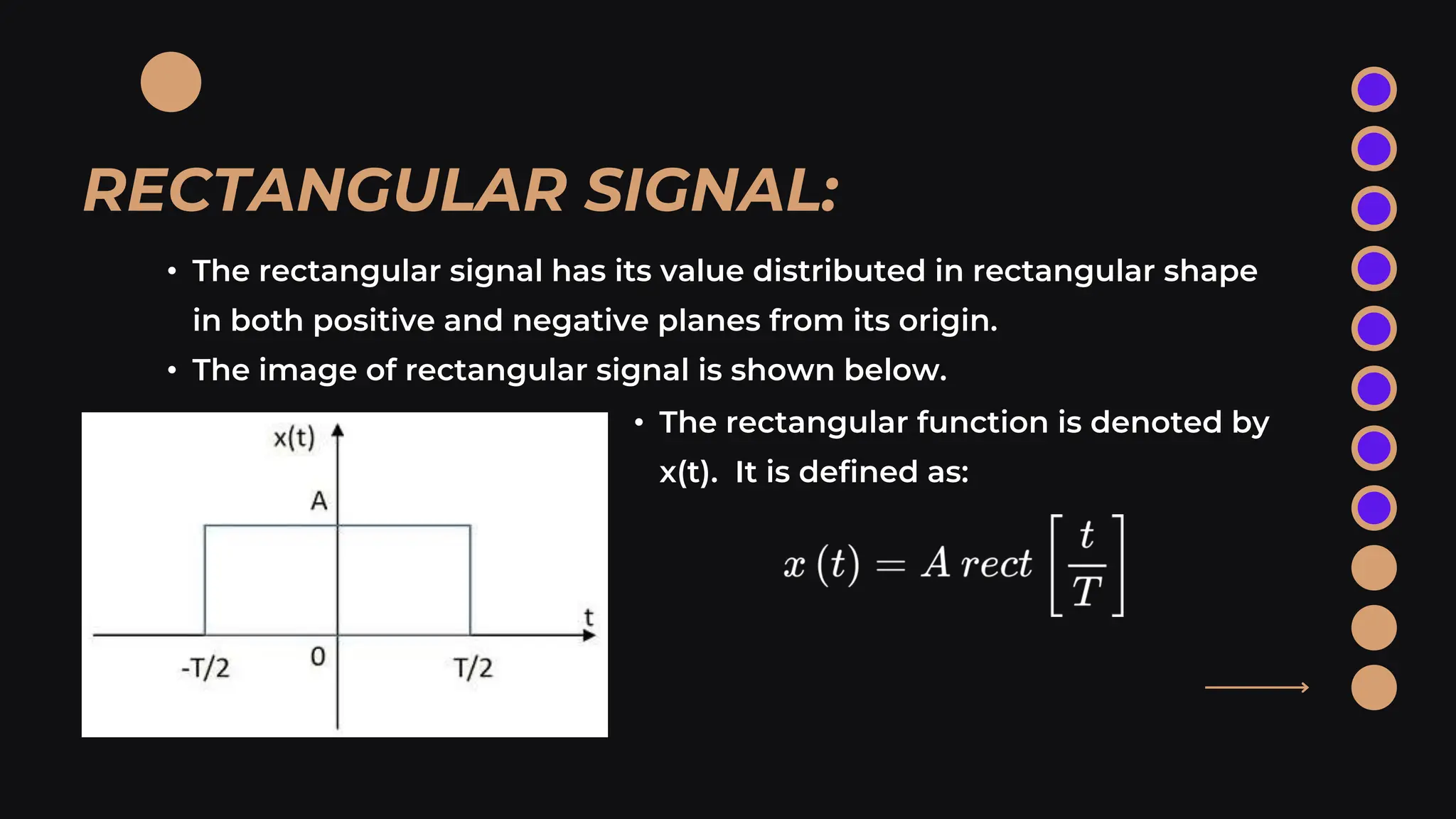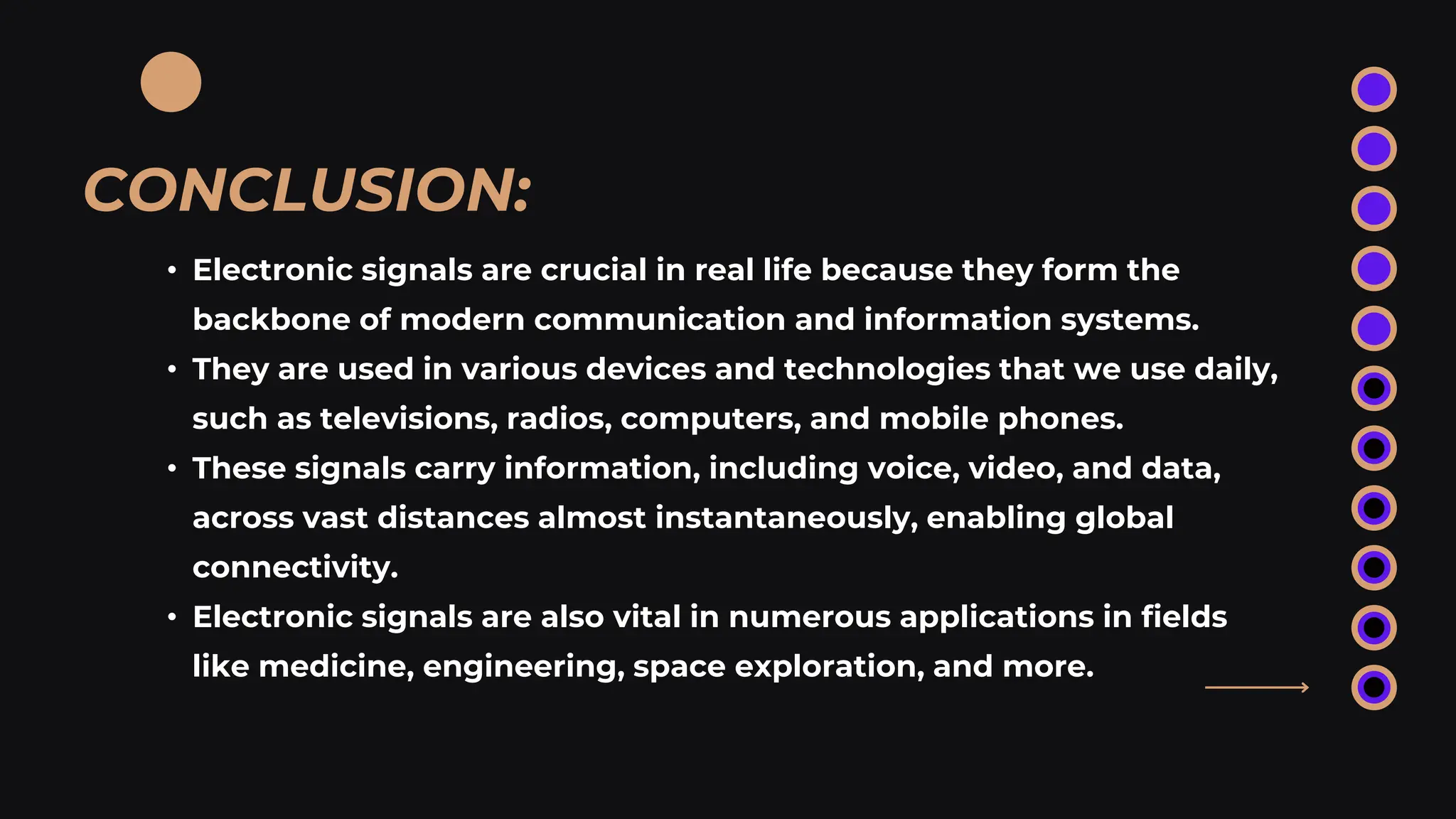The document discusses the various types of signals in electronics, categorizing them as analog and digital, and detailing their parameters such as amplitude, frequency, and phase. It explains the characteristics of periodic and aperiodic signals and provides summaries of specific signal types like sinusoidal, triangular, and square signals, along with noise and test signals. Additionally, it emphasizes the importance of electronic signals in modern communication and technology applications.






